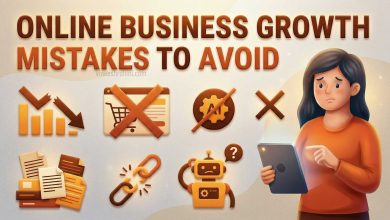How to Dropship on Shopify and Grow Your Business
In recent years, the e-commerce landscape has witnessed a revolutionary business model known as dropshipping. This method allows entrepreneurs to set up online stores without the need to carry inventory. One of the most popular platforms for starting a dropshipping business is Shopify. This essay delves into the intricate details of how to dropship on Shopify and outlines strategies to grow your business using this model.
Understanding Dropshipping
Dropshipping is a retail fulfillment method where a store doesn’t keep the products it sells in stock. Instead, when a store sells a product, it purchases the item from a third party and has it shipped directly to the customer. This eliminates the need for inventory management and reduces upfront costs, making it an attractive option for aspiring e-commerce entrepreneurs.
The Benefits of Dropshipping on Shopify
- Low Startup Costs: Traditional retail models often require substantial capital to purchase inventory. With dropshipping on Shopify, the upfront costs are significantly lower, as you only purchase products when you make a sale.
- Wide Product Variety: Dropshipping allows you to offer a wide range of products without the constraints of physical storage space.
- Location Independence: As long as you have an internet connection, you can manage your dropshipping business from anywhere, making it a suitable option for digital nomads.
- Scalability: Since you don’t need to worry about inventory and fulfillment logistics, scaling your dropshipping business is relatively straightforward.
Steps to Dropship on Shopify
Choose a Niche: Select a specific product niche that aligns with your interests, target audience, and market demand. Research trending products and identify a gap you can fill.
Set Up Your Shopify Store:
a. Sign Up: Create a Shopify account and choose a suitable plan.
b. Pick a Domain Name: Select a domain name that reflects your brand and niche.
c. Design Your Store: Choose a visually appealing theme and customize it to match your brand identity.
d. Add Products: Integrate dropshipping apps like Oberlo or Modalyst to import products from suppliers to your store.
Source Reliable Suppliers: a. Research and partner with reputable suppliers who offer quality products and reliable shipping. b. Evaluate shipping times and costs to ensure a positive customer experience.
Optimize Product Listings: a. Write compelling product descriptions that highlight benefits and features. b. Use high-quality images to showcase products from different angles.
Set Competitive Prices: a. Consider factors like product cost, shipping fees, and desired profit margin. b. Be mindful of pricing strategies to remain competitive in the market.
Implement Effective Marketing: a. Utilize social media, content marketing, and influencer collaborations to create brand awareness. b. Invest in paid advertising on platforms like Facebook and Instagram.
Provide Exceptional Customer Service: a. Offer timely responses to customer inquiries. b. Address customer concerns and issues promptly.
Strategies to Grow Your Dropshipping Business on Shopify
Focus on Branding: Develop a unique brand identity that resonates with your target audience. Consistent branding across your website, packaging, and social media helps build trust and loyalty.
Optimize for SEO: Implement search engine optimization (SEO) techniques to improve your store’s visibility on search engines. Use relevant keywords, create valuable content, and optimize product descriptions.
Leverage Email Marketing: Build an email list and send regular newsletters to engage customers. Offer discounts, updates, and exclusive content to keep subscribers interested.
Offer Exceptional Customer Experience: Prioritize user-friendly navigation, easy checkout, and transparent shipping information. Positive customer experiences lead to repeat business and word-of-mouth referrals.
Expand Product Range: Gradually expand your product offerings based on customer preferences and market trends. This keeps your store fresh and encourages repeat visits.
Utilize Social Proof: Display customer reviews, testimonials, and user-generated content to establish credibility and influence purchasing decisions.
Monitor Analytics and Adjust: Regularly analyze your store’s performance using Shopify’s analytics tools. Adjust your strategies based on data to optimize conversions and improve customer engagement.
Conclusion
Dropshipping on Shopify presents a lucrative opportunity for aspiring entrepreneurs to enter the e-commerce landscape with minimal upfront investment. By understanding the intricacies of dropshipping, setting up a Shopify store, sourcing reliable suppliers, and implementing effective marketing strategies, you can establish and grow a successful online business. Remember that success in dropshipping requires dedication, adaptability, and a commitment to providing exceptional customer experiences. As the e-commerce industry continues to evolve, dropshipping on Shopify remains a dynamic and accessible avenue for realizing your entrepreneurial aspirations.



